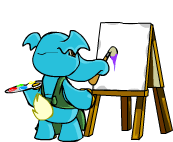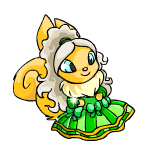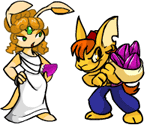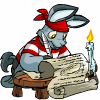There is this dangerous idea floating around in society that writing is some kind of mystical gift you are born with. You either have it or you don’t. When newspaper reporters interview writers, they typically ask, “When did you start writing?” and “Where did the inspiration for your book come from?” They almost never ask, “How did your interest in this subject begin?” or “What research did you do in order to write this book?”
The truth is, writers don’t just sit around waiting for some random spark to hit them. Even though an idea, when it comes, can feel like a spark of inspiration, it doesn’t actually come from nowhere. What makes a person a writer is a lifestyle, a habit of mind—one that anybody, with practice, can get into.
Writers don’t sit around waiting for inspiration.
From what I have seen, most good writers have several traits in common. They:
1. read a lot.
There is so much you can learn from other writers before you. Writing is a craft, just like painting. If you were in a painting class, you would go to a museum to see how the best paintings are done. Read a lot of stories in the genre that you are interested in getting into—and outside of that genre, as well!—and take note of how the best writers build characters, evoke settings, generate tension, and so on. Eventually you’ll learn enough to be able to develop your own voice and style.
Read and you will find your way.
2. observe the world.
Talk to people. Watch and listen. Millions of interesting things happen every day; all you have to do is notice them.
Look around your desk. Grab a random object—a pencil, a mug, anything—and pretend you’re an alien from outer space. What does this piece of human civilization look like, feel like, sound like and smell like? What might it mean?
Go to a post office, a park, a gift shop, anywhere—and pay attention to how people dress and behave. Look around on the Neoboards and observe the fonts, avatars and turns of phrases that people use. Observe how people interact with each other and their surroundings.
Neopets has all sorts of interesting settings you can explore for your story as well. Sometimes you can come up with an entire story just by looking around Neopia and thinking—for instance—”What would it be like to live next to the Tyrannian Concert Hall?” These habits of observation and interpretation will be immensely valuable to you whenever you travel to a new place or revisit a familiar place.
3. write down observations.
Everybody has experiences, and everybody thinks about their experiences from time to time. The difference is that a writer writes them down. Make a habit of catching and recording some of the many thoughts that flit through your mind every day. The vast majority will never make it into any of your stories, but it is a good habit to remember to write them down. You never know when they will come in handy.
Don’t let those interesting thoughts go to waste!
4. never stop learning.
The moment you stop learning, your thoughts become stagnant, and your stories become boring and repetitive. So never stop learning. Seek out new experiences, engage in habits of reflection, and maintain an open and thoughtful attitude toward everything you encounter.
Once you’ve gotten into the habit of reading, learning, thinking and writing, inspiration will naturally come to you.
story structure
Now that you’ve got your reservoir of ideas, it is time to arrange them into a story-shape.
There actually is a structure to it!
The shape of a story is very simple. You can think of it as:how things were → then everything changed → how things ended up
Another way to think about it is through the perspective of the protagonist, or main character—the person that the story is about:character starts out believing X → things happen → character has to make a decision or change → ends up believing Y
Note that this is for conventionally shaped stories. There are definitely stories out there that break with convention, but it is important to understand story structure first before you do anything experimental.
Most stories focus on the experience of one or a few protagonists. (I would start out with just one.) It is simplest to shape the story from that protagonist’s point of view, whether by writing in the first person, or writing in the third person.
First person: I made the last snip, and unfolded my art.
Third person: The Nimmo made the last snip, and unfolded his art.
It is usually easier to write in the first person if the protagonist is somebody that you identify with. It takes a lot of skill to craft a good first-person voice for somebody who is totally not you. I would recommend sticking to the third person if you’re having difficulty fully entering into a character’s head.
Everything in the story will be filtered through the protagonist’s point of view. The other characters are only there to be part of the protagonist’s experience. They each have their own stories, of course, but this particular story is not focusing on them.
The first step in writing a story, then, is to create a protagonist. Spend some time thinking about who he (or she) is, what world he lives in, what he wants, and what he believes. The beginning of a story will perform three tasks:1. introduce the protagonist2. set the story in a specific time and place3. hint at some tension or conflict to follow
Let’s go through these points one by one.
1. introducing the protagonist.
An interesting protagonist—one that readers are going to care about—will have both good qualities and bad qualities. Good qualities make them endearing; bad qualities make them realistic. Nobody wants to read about the perfect girl who gets amazing grades all the time and has a gigantic following of friends and never makes any mistakes ever. Similarly, the miserable kid who is always bitter and grumpy and never helps anyone or does anything positive, is just as boring of a character. Try to find a balance between the two extremes when you’re creating your protagonist.
Perfect princesses are boring.
One thought that is helpful to keep in mind at this stage is:am I creating a character or a stereotype?
Think about the real people you’ve met in your life, and the characters you’ve encountered in books and films. What makes them unique?
Realistic characters aren’t 100% consistent. The seemingly perfect girl, for instance, might in fact have deep anxieties. Maybe her elder sister is an overachiever, and she feels pressure to live up to that. Maybe she rubs her elbows when she’s anxious. Or maybe she secretly hates the clothes that everyone else considers fashionable, but she wears them anyway because she wants to fit in. If you insert a scene of her talking to her pet when nobody’s watching, and juxtapose that against the scene of her behaving like a model student, that’s going to add a whole new dimension to her character.
A final note: One of the benefits of writing on a site like Neopets is that there is a rich pool of stock characters to interpret. Most stock characters, such as Illusen or Dr. Sloth, are both well-known and memorable enough for you to be able to invoke them without much introduction, and simple enough for you to have lots of room to interpret them. Do be sure that when you use stock characters—or any character type, really—put in the effort to give them a dimension of your own invention. Your Illusen should end up very different from another writer’s Illusen.
2. setting the story in a specific time and place.
When characters are talking or doing anything, always be mindful of where they are and how they relate to the environment around them. The atmosphere in a coffee shop in the early afternoon, for instance, is very different from the atmosphere in a library in the late evening.
Don’t miss out on any important details when you’re creating the scene in your mind. What does the environment smell like? What sounds can you hear? Is the ground textured or smooth? And what about the cultural setting? What sorts of clothes do the people wear? What are the norms surrounding social behaviour? All of that is going to have an influence on your characters’ actions.
Characters interact with their environment.
Keep in mind also that the same environment can appear very different to a character depending on his state of mind. If your character has just had to say goodbye to his best friend, the scene of a group of friends eating ice cream together in a coffee shop is going to affect him very differently than if he had just had an amazing day and was going to the coffee shop to relax. When a character is upset, all sorts of stimuli in the environment can be intensely annoying to him: the clatter of spoons, or the cloying sweetness in the air. Make the effort to imagine what your character is going through, and try your best to evoke that experience for the reader.
3. generating tension and conflict.
The intrigue that drives the story is going to center around what your protagonist wants and what obstacles she faces as she tries to get what she wants. Remember how, when we talked about how to create a character, we reflected on what makes a character interesting? The same principle applies here: if everything goes too smoothly for your protagonist, then the story isn’t going to be very interesting.
In a conventional story, the protagonist struggles, and changes as a result of those struggles. There are three parts to the protagonist’s struggle:1. she has a yearning2. she encounters antagonism3. she has to make a choice in response to the antagonism
The yearning is for something abstract like social acceptance, or independence, or recognition. Everybody has a yearning. When a character tries to fulfill her yearning, she will pursue something concrete that represents what she wants: for instance, a friendship with the most popular kid in school, or a summer job, or the position of soloist for the school choir. Whatever it is that your character does, always make sure there’s a reason or motivation behind the action.
Interesting things happen when what your protagonist wants comes into conflict with what another character wants—or when your character’s efforts bump up against another force of antagonism. Maybe somebody else is after that summer job your protagonist wants. (The somebody else would then be the antagonist.) Maybe your protagonist has a speech impediment. Or maybe there was an accident on the road on the exact same day your protagonist was going to audition for her solo, and she couldn’t get to her audition in time. All of these are sources of antagonism and conflict.
Conflict keeps the story moving.
The story builds to a climax when your protagonist has to make an important decision. In Disney’s Frozen (2013), for instance,SPOILER ALERT!
the climax occurs when Anna has to choose between being saved by Kristoff, and saving the life of her sister Elsa. She chooses to sacrifice herself for her sister, which ironically produces the act of true love that breaks the spell she’s under. So it wasn’t a prince’s love from outside, after all, that broke the spell—but a love from within herself. (Ah, I love that movie!)END OF SPOILER
If any of this still sounds abstract to you, try participating in the Storytelling Competition. (Check out TJ’s guide in the “Related Links” section.) It’s great practice for familiarizing yourself with story structure. There are ten parts in the story— two on Monday, two on Tuesday, and so on—and writers submit entries for each part as the story progresses. A judge from The Neopets Team chooses the best entry and updates the story twice a day. The result is a collaboration as much as it is a competition: writers fill in each others’ weaknesses to produce a story that is both entertaining and consistent.
I’ve learned from participating in the Storytelling Competition that one of my main weaknesses is plot development. In the past, I won a large number of Storytelling endings, but did not fare so well in the earlier parts. That’s because I’m a descriptive writer and tend to struggle when it comes to generating conflict. So when I write a full story on my own, I have to push myself to write scenes that aren’t merely descriptive, but that actually advance the plot.
Speaking of endings…4. leave the reader with a memorable image
Not everything has to be resolved by the end, but the rhythm of the story—so to speak—definitely has to slow down. To use Disney’s Frozen again as an example, the final image is of Anna skating on the ice with Elsa. We don’t know yet if the tension between the two sisters from all those years of Elsa not talking to Anna is going to be completely resolved, or if things are going to work out for Anna and Kristoff, but there definitely is a satisfactory pause and a window of hope. That’s what a good ending does.
writing your story
Now that you have an idea of who your protagonist is and what he or she is going to go through, it is time to draft the story.
In the early stages of writing a story, just… write. Generate as much material as you can. Write whatever comes to mind regarding your character’s personality, friends and family, and obstacles. There is no such thing as over-imagining. Think about anything and everything when you’re writing each scene: the facial expressions of the characters, the way each character talks, their posture and their relation to each other and the environment around them. Don’t limit yourself at this stage.
Just write.
After you’ve generated a bunch of material, select and arrange the best scenes into the story-shape we’ve discussed above. You may find that you have to rewrite some scenes, or take out some scenes, or add in new scenes. These are all perfectly normal in the story-writing process. Most good writers go through more than one draft before their story is ready.
In the editing process, you will want to ask yourself these questions:1. what is the story I am trying to tell?2. is that story evident on the page?
If the answer to either of these questions is unsatisfactory, you have more work to do on the story. But rewriting and editing can be very rewarding. You already have the general shape mapped out; all that is left is filling in the fun stuff.
Finally, before you submit, double-check the spelling, punctuation, grammar and other details. Have some friends look over the story; ask them to tell you if there were any sentences that tripped them up, or any phrases that didn’t make sense to them. They will often pick up on small errors that you didn’t notice.
Proofread before you submit.
And there you have it! That’s how you write the story. After the work of creating a character and outlining a series of events, the writing really is the most enjoyable part.
workshopping
If, on your first try, your entry gets rejected, don’t give up!
Every writer has to deal with rejection at some point.
The key is to pick yourself back up again, and seek out criticism from other writers in order to figure out what you can do better. Remember that any rejection or criticism you face is not an attack on you, but an opportunity for you to improve your work. Remember how, in the “Where Inspiration Comes From” section, we talked about writing as a set of practices you engage in, not as a mystical talent you’re born with? There are always ways for you to improve as a writer.
When seeking critical feedback from others, remember these two things:1. you won’t learn anything if you refuse to listen2. your story is ultimately your story
These two things may sound mutually contradictory, but they really are not. It’s important to balance in your mind the ability to receive feedback, and the vision you originally had for your story. Sometimes your critics will be spot-on when they point out a weakness in your story that you didn’t realize was there. Sometimes your critics will completely misunderstand something about your story. In the end, it’s your call, and you have to make the final decisions regarding your work.
One last note: Workshopping is not just for rejected stories. The Neopian Times Writers’ Forum conducts reviews for every issue of the Neopian Times. Good writers seek out feedback all the time, even for their published work. That’s because publication is an illusion: just because something is published doesn’t mean it’s perfect. After writing a story, it’s always good to learn what you did well in it, and what you can do better for next time.
the end?
After you get your Neopian Times trophies and avatars—after you’ve outgrown the initial thrill of being a published writer on a children’s site—it can feel like the end.
But growing up doesn’t have to mean giving up on your recreational writing.
Regardless of where your path in real life takes you, you don’t have to stop writing. I know people who are programmers and business consultants and researchers, and they still write for fun. Very few people ever make it as novelists or full-time writers, but writing can definitely still be a part of your life. Once you’ve acquired the lifestyle and the skills, you never really lose them. Unless you allow yourself to.
In every situation in life, there will always be new people to meet, new experiences to have. New stories around every corner.
related links

○ Official Tips Regarding Neopian Times Submissions
A list of tips from the Neopian Times editor. I would definitely check them out before entering any writing-related competition on Neopets. If you’re thinking of writing a story that contains violence, modern-day technology, or other topics that are disallowed, Neopets may not be the best venue for it.
○ TJ’s Guide to the Storytelling Competition
TJ is a longtime participant in the Storytelling Competition. There have been many guides written on Storytelling, but hers is one of the more helpful ones I’ve found—especially the “Daily Guide” section which explains the shape of the story as it progresses through the week.
○ Jellyneo’s Guide to Writing Neopian Times Articles
This guide covers the genre of Neopian Times articles, which is outside the scope of my petpage.
○ Schefflera’s Guide to Word Choice
Schefflera is perhaps the first Neopian writer I admired on this site. She has made numerous contributions to Storytelling, Poetry and the Neopian Times. In this article, she gives some helpful tips regarding word choice.
○ Pacmanite’s Guide to Making Neopian Times Comics
Pacmanite is the author of the long-running comic series Land of Pacman. If you’re interested in making comics for the Neopian Times, I would definitely check out what she has to say.
○ Komori’s Comic-Making Process
Komori is the author of the long-running comic series Spooky. On her petpage she shares with us her process of making a comic, from blueline sketch to finished panel.
○ Poetry Contest Submission Form and Guidelines
Official guidelines for the Poetry Contest.
○ Anjie and Chivo’s Guide to the Poetry Contest
Anjie and Chivo are a well-known pair in the Neopian writing competitions. In their guide, they discuss a variety of poetic forms and strategies for writing a Neopian poem.



